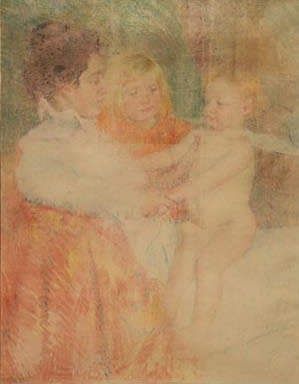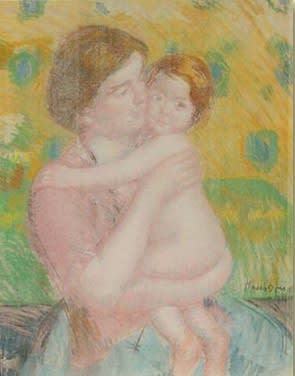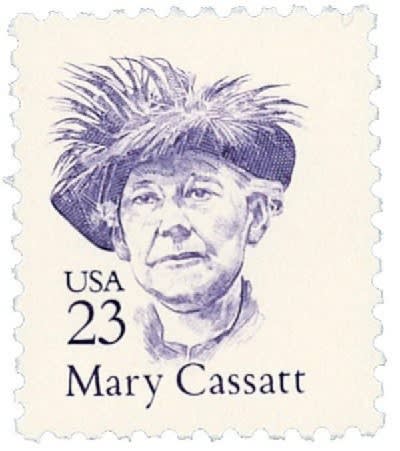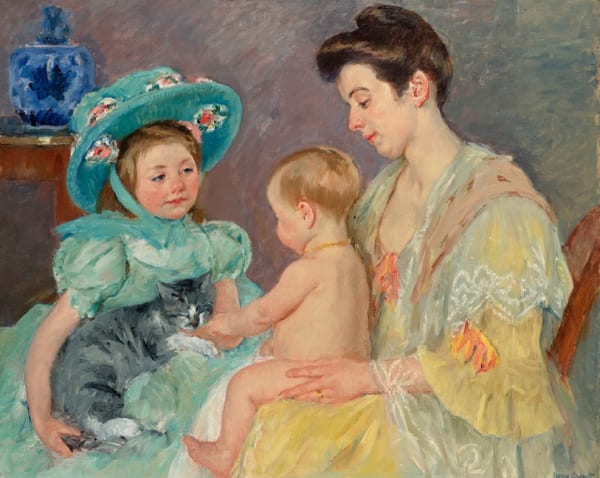When Mary Cassatt was fifteen years old she studied at the Pennsylvania Academy of Fine Art in Philadelphia. The school didn’t allow female students to draw from live models and didn’t award diplomas or degrees to females, no matter how much talent they had.
In the late 1800s, many women studied art to expand their cultural horizons but were not encouraged to become professional artists. Besides the patronizing attitude of her teachers and fellow students, her own father discouraged her artistic endeavors. He wrote a letter to her, saying, “I believe that it is inadvisable that you should extend yourself beyond the domestic role for which you were intended.” But Cassatt’s determination was so strong, that she decided to study on her own.
Mary Cassatt in Paris, with Degas
Cassatt moved to Paris in 1866, when she was twenty two years old. Her mother, sister Lydia and family friends acted as chaperones. Women were not accepted at the École des Beaux-Arts, so she studied privately and got a permit to copy paintings at the Louvre. Copyists at the Louvre, mostly women, were allowed to copy the works of the great masters but had to leave their work, unsigned, with the museum.
At the time she moved to Paris, some artists were breaking away from traditional realism and experimenting with alternative techniques. One of those artists was Edgar Degas.
“Seeing his work changed my art,” she wrote, “I saw art then as I wanted to see it.”
Degas became a friend and mentor to Cassatt. Their friendship lasted for forty years. Their studios were in walking distance of each other and Degas used her as a model. He had a reputation for being a curmudgeon, loudly anti-semitic and a misogynist. “I always painted her as a strong, bold woman and I sometimes elevated her to the status of a man,” he wrote.
It was Cassatt who brought his work to America and introduced Impressionism to the American art world. It was not embraced by the public or by critics. Even the label Impressionist was coined as a slur. The work was considered not painting, but just the impression of painting. Looking at her work today, the subject of mother and child seems almost mundane, but Cassatt was actually painting some of the most liberated women of her time.
It was common practice among upper class women, at the turn of the twentieth century, to leave their children in the care of a nanny. Women who cared for their children themselves were often criticized and considered too liberal. It was these women that Cassatt admired, observed and painted. Degas inspired her to use pastels and an exhibit of Japanese prints motivated her to set up a printing press in her studio.
Works like Mother, Sara and the Baby were the elegant result of her work with pastels and print. Cassatt created the same softness and sensibility in oil paintings like Mother with Her Nude Child Looking (to Right).
Mary Cassatt Originals at Surovek Gallery
Please contact us for more information about Mother, Sara and the Baby, Mother with Her Nude Child Looking (to Right) and other work by Mary Cassatt available in our gallery.



